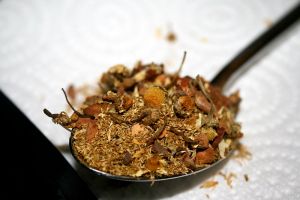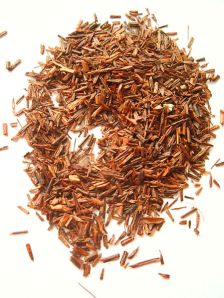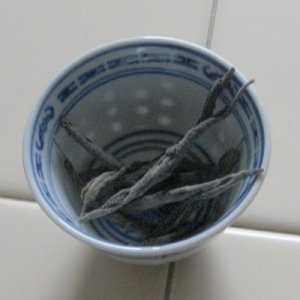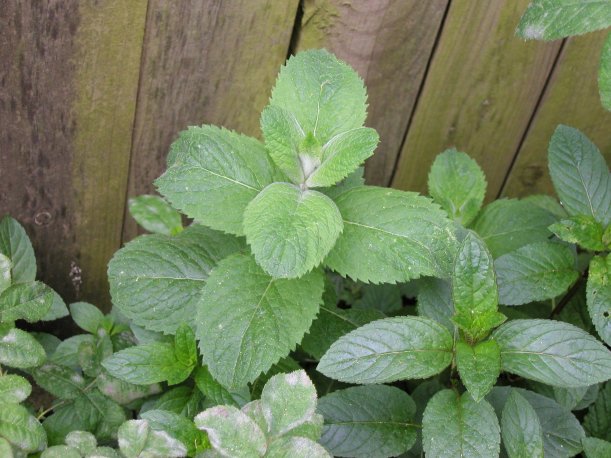This post is loosely inspired by my original post: Sustainability: Why Is It Important For Tea?
Sustainability is a key driving value in my life, and I included sustainability in the purpose statement of RateTea. It’s an idea that guides choices in virtually all parts of my life. What exactly is sustainability? It’s not the same as environmentalism, a distinction I’ll explain later. Wikipedia has a long page on sustainability, but it starts with a very simple sentence:
Sustainability is the capacity to endure.
Sustainability is an idea that captures whether something can be continued indefinitely, without adverse consequences or depleted resource forcing you to stop what you’re doing. Using up a non-renewable resource is obviously unsustainable, but there are many other reasons that can cause something to be unsustainable–basically, any practical constraint that forces you to stop. Sustainability is a working concept–it’s about what you can keep doing. Something is unsustainable if you can’t keep doing it.
Sustainability is a simple idea, easy for children to understand.
I remember thinking about sustainability as a kid, long before I had a name to attach to the concept. As a very young kid, I naturally encountered limits. I would regularly play with wooden blocks, and I learned that there’s only so high you can stack individual blocks before they become unstable and fall over. Stacking blocks on top of each other is unsustainable. The higher you want to stack them, the broader a base of supporting blocks you need. Because there’s a limited supply of blocks, there’s a limit on how high you can build.
It’s such a simple idea, but it’s at the heart of deep ecological concepts, like how a food web is structured, or the idea of the carrying capacity of an ecosystem.

Wooden blocks a lot like the ones I played with as a child. Photo by Belinda Hankins Miller, Licensed under CC BY 2.0.
Another idea I remember thinking about as a kid, that got me thinking about sustainability, was the idea of cemeteries. I saw a lot of cemeteries as a kid, and I noticed that people seemed to view them with reverence, leaving them as-is and protecting them from development even as everything around them changed. Somewhere along the line, I asked the question: since people keep dying, wouldn’t cemeteries eventually fill up and wouldn’t we run out of space to bury people in? My parents explained to me that they do, and that cremation represents an alternative to being buried and taking up space in a cemetery. The cultural practice of burial in cemeteries is unsustainable.
There was a Guardian article about how the UK is already running out of space in cemeteries, in which the head of the Institute of Cemetery and Crematorium Management acknowledges: “Cemeteries are unsustainable.”

One of my photos of Woodland Cemetery in Philadelphia. Cemeteries have gotten me thinking about sustainability in multiple ways: first as a kid, and later, as I conducted a bird survey of this cemetery, for eBird.
To show you how complex sustainability can get, even though the idea of a cemetery with burial of people is inherently unsustainable, the cemetery pictured above is promoting a different sort of sustainability–as an island of greenspace in a highly developed urban area, it provides valuable habitat for birds. As a volunteer surveyer for eBird, I gathered a year’s worth of data on this site, surveying it weekly (gathering several data points for most weeks), allowing eBird to produce graphs of what species can be found at this site year-round. The results are exciting; I and a few other birders have currently recorded 109 species of birds found in this cemetery. View the data for yourself.
The lesson that I take from this is that the world is complex, and even if something is unsustainable for one reason, it might provide some other benefit which might promote a different sort of sustainability. In this case, the space used up for a cemetery created a protected greenspace, effectively immune from urban development, that ended up providing greater ecological value for birds than the surrounding urban area.
The Difference Between Sustainability And Environmentalism
As I explained above, sustainability is a very simple concept, one that I think even young children can grasp with ease. But it can be very complex to implement. Part of the reason for this is the fact that humans depend on their environment for food, clean air and water, and other products and ecosystem services.
Environmentalism, on the other hand, is a little trickier to grasp; look at how there’s a lack of a clear definition in Wikipedia’s article on environmentalism. What exactly is “the environment” anyway? And how do you preserve and protect it? I think that in order to grasp what environmentalism is in a meaningful way, one needs a certain degree of scientific and/or cultural knowledge…central concepts in environmentalism are ecosystems, biodiversity, and cycles of water, air, and energy. Each of these concepts takes a certain degree of knowledge and intellectual sophistication to even partially understand.
There are a lot of examples of humans misunderstanding how to protect natural ecosystems; for example, for many years we suppressed forest fires in much of North America, thinking it was protecting the forests; now we know that fires are a natural part of the cycle of life for many wild ecosystems, and that fire suppression can cause great damage in the long-run, sometimes culminating in catastrophic wildfires of unprecedented scale.

Knowing how to protect the environment can be subtle; here, an introduced species, Chickory, is supporting a native insect pollinator of the Agapostemon genus. I took this photo inside Woodland Cemetery, not far from the other picture above.
Sustainability encompasses environmental issues, because humans depend on the environment, so if a practice damages or destroys aspects of the environment that we depend on, it’s not sustainable. But this is only one part of sustainability. Practices can be unsustainable for human reasons, such as if a particular policy or practice causes political unrest or social upheaval. So the two concepts, while they are closely related, are definitely distinct and to some degree independent of each other.
Does this have anything to do with tea?
I think the answer to this question is: “Yes and No.” So far, I haven’t talked about tea at all. This is because my reasons for believing in and living by the idea of sustainability have nothing to do with tea. If tea did not exist, I would be just as committed to sustainability as I am now.
But at the same time, sustainability has everything to do with tea; the way I see it, sustainability has everything to do with anything that involves human choices…it’s a fundamental, common sense idea that informs every aspect of my life, so of course I want to apply it to tea.
How does sustainability manifest in my thinking about tea?
This is a potentially boundless question, but some of the ideas I think of most often are:
- Using (and promoting) loose-leaf tea as a way of minimizing packaging; choosing loose-leaf as often as practically possible
- Being aware of, and raising awareness of, issues of biodegradability and compostability of tea packaging; seeking out companies that use packaging with less environmental impact
- Looking at how tea is produced, and looking at its impacts on the environment; buying and highlighting teas that are produced in the most environmentally-sustainable ways
- Looking at the economics of tea production, and how it affects the communities in which tea is produced; buying teas that promote sustainable economics in the communities of production
- Thinking about how we enjoy tea, and its impacts on mind, body, and culture; enjoying tea with others, relaxing and clearing my mind as I enjoy tea alone, so as to keep a healthy mind and promote a sustainable culture
- Thinking about what incentives the structure and design of RateTea sets up, so that it can have as positive an influence on sustainability in the tea industry as possible
What do you think?
- Is sustainability also a driving value in your life?
- How do you think about sustainability as it pertains to the world of tea? Are there any major ideas that you think I missed in my list above?
- How did you come to embrace the idea of sustainability? Was it common-sense to you, and was sustainability merely a word that you assigned to a concept you already understood and were committed to? What life experiences or ideas led you to understand the importance of this concept?
- Do you make a distinction between environmentalism and sustainability? Can you think of examples of aspects of sustainability that have less to do with environmentalism? Can you think of any aspects of environmentalist movements that are perhaps unsustainable or divorced from the idea of sustainability?






